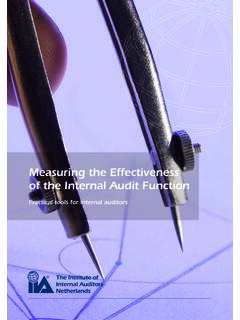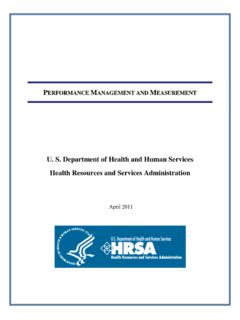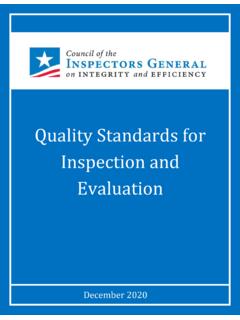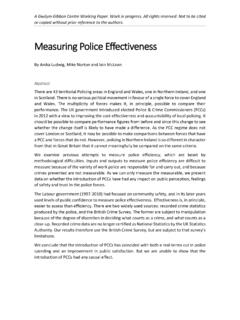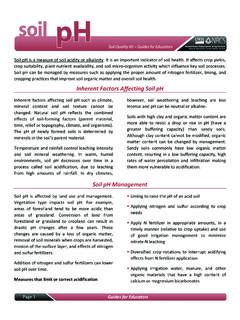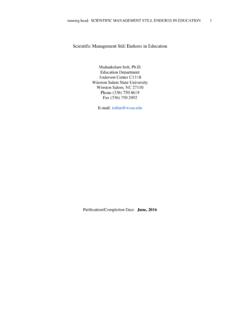Transcription of DFID’s Approach to Value for Money (VfM) - GOV.UK
1 1 DFID s Approach to Value for Money (VfM) Department for International Development July 2011 Contents Top-line 1. VfM Figure 1: DFID s 3Es 2. How we ensure Value for Money in our Aid Programme ..9 Figure 2: DFID Results & VFM 3. What this means for Quest reference: 3116186 2 Top-line messages Value for Money (VfM) in our programme1 is about maximising the impact of each pound spent to improve poor people s lives. The purpose of the VfM drive is to develop a better understanding (and better articulation) of costs and results so that we can make more informed, evidence-based choices. This is a process of continuous improvement. VfM doesn t mean we only do the cheapest things, but we need to get better at understanding what is driving our costs and make sure that we are getting the desired quality at the lowest price. Where we work through partners we need to influence them to do the same.
2 We need to understand what works- a judgement based on the strength of evidence supporting an intervention and making our assumptions explicit. We don t just do the easiest things to measure, but the agenda does mean we have to get better at measuring. We need to be more innovative in how we assess Value and we need to get better at articulating what results we are buying with UK taxpayer s Money . Where we work through partners we have to influence them to do the same. Our partner countries play a critical role in delivering results. For this reason we support partner countries to lead their own development. We try to work with the grain of the political process in achieving development and we expect the same from our partner organisations that we work through. We want to improve the VfM of all aid not just DFID s own. When we make decisions about our core contributions to partners such as multilateral agencies we have to ask additional questions that look beyond their effectiveness and also considers their focus and level of ambition.
3 The Multilateral Aid Review (MAR) asked these questions. Increased transparency and accountability in our operations will help to drive the VfM agenda and all staff need to be prepared to explain their VfM decisions publicly. All staff need to make VfM considerations central in deciding what we do, how we implement and how we learn lessons. Back to top 1 This document focuses on VfM of our Programme spend and does not deal with issues of Value for Money in our operating costs. 31. VfM Principles The National Audit Office (NAO) defines VfM as being the optimal use of resources to achieve intended outcomes . It s useful to contextualise this when we consider VfM in our aid programme. Value for Money in DFID s programme means: We maximise the impact of each pound spent to improve poor people s lives. VfM is not a new concept or a hurdle we have to jump over in order to be allowed to carry on doing development; it s about maximising the impact of each pound spent to improve poor people s lives.
4 The decision to invest in an intervention requires a judgement of whether the expected development results justify the costs. The diversity in our portfolio makes it difficult to produce comparable measures of what constitutes good Value for Money for many interventions. So the Investment Committee decided against introducing a standard hurdle rate of return for DFID interventions. To maximise the impact of UK aid we need to be very clear about the results (outputs and outcomes) we expect to achieve as well as the costs. We also have to be confident in the strength of the evidence base and explicit in stating the underlying assumptions we are relying on in achieving the outputs and outcomes. This means looking at the 3Es economy, efficiency , effectiveness as well as the strength of the links in the chain. When we make judgements on the effectiveness of an intervention we need to consider issues of equity.
5 This includes making sure our development results are targeted at the poorest and include sufficient targeting of women and girls. Value for Money is about maximising each of the 3Es, so that we have maximum effectiveness , efficiency and economy for each intervention. When we make decisions about our core contributions to partners such as multilateral agencies we have to ask some additional questions. These include questions such as to what extent does the organisation focus on poor countries or humanitarian need and what is their level of ambition when it comes to tackling challenging objectives. A comprehensive list of what to consider is set out in Annex 1 of the Multilateral Aid Back to top 2 4 Figure 1: DFID s 3Es Framework 3Es Economy Are we or our agents buying inputs of the appropriate quality at the right price?
6 (Inputs are things such as staff, consultants, raw materials and capital that are used to produce outputs) efficiency : How well do we or our agents convert inputs into outputs? (outputs are results delivered by us or our agents to an external party. We or our agents exercise strong control over the quality and quantity of outputs) effectiveness : How well are the outputs from an intervention achieving the desired outcome on poverty reduction? (Note that in contrast to outputs, we or our agents do not exercise direct control over outcomes) Cost- effectiveness : How much impact on poverty reduction does an intervention achieve relative to the inputs that we or our agents invest in it? Results: DFID s 3Es framework shows that the Value for Money agenda is not just about cutting costs. What we re directly buying with taxpayer Money (outputs) and what this transforms into at the development outcome level are key parts of the VFM agenda.
7 The results agenda is about being clear what outputs and outcomes we can realistically expect from an intervention whether this is from a direct DFID intervention or working through a partner. These results are not just short-term tangibles but should also be longer-term sustainable benefits for developing countries. We need to continue to drive forwards the agenda and influence all our partners to get better at expressing results. Back to top Input Vaccine and vaccination consumables Process Outcome Output Impact Children vaccinated Children less susceptible to major childhood diseases Poverty reduced (MDG4) Delivery logistics (freight and cold-chain) efficiency Economy EffectivenessCost- effectiveness Equity considerations 5 Example 1 - effectiveness : Are DFID s education investments delivering education outcomes of Value ? The National Audit Office (NAO) produced a report on the UK s Bilateral Support to Primary Education as part of their VfM Studies in 2010.
8 One of its main criticisms was that DFID was focusing too much on the attendance of students and not enough on children completing primary school and securing good learning outcomes. For example in Ghana, only 26% of final grade primary school children are proficient in English and only 11% in maths. So we were not ensuring that investment in enrolment was paying enough dividends for the children going to school, many of them for the first time. In response, DFID has committed to all its education programmes taking steps to measuring and monitoring learning outcomes - and all our Operational Plans must measure primary completion rates. Costs: VfM doesn t mean we only do the cheapest things, but we do have to get better at understanding our costs. Just because educating a girl in Ghana might cost less than educating a girl in DRC it doesn t mean we should divert all our funds to girls education in Ghana.
9 Context matters and we take this into account in our VFM judgements. Costs are going to vary based on the different environments we work in. The hardest to reach people and places are more expensive to deliver development results to. We don t shy away from this. The important thing is to understand our cost drivers and to make sure we get the desired quality of inputs at the cheapest possible price. Where we work through partners we need to be confident that they have the right systems and behaviours in place to also do this. We need to encourage them to continually improve in these areas. Example 2 - Economy: Key education unit costs DFID s 2009 Education Portfolio Review identified wide variations in key education unit costs. For example on text-books, there was a ten-fold variance between highest and lowest cost countries, with a text-book costing $5 in Nigeria and $ in Vietnam.
10 The 2010 NAO Education VFM Study found that unit cost variations remained unexplained and only 3% of projects tracked cost- effectiveness or efficiency . As a result, DFID cannot easily analyse trends in Value for Money over time or between different providers . In response, DFID has committed all its education programmes to investigate opportunities to drive down unit costs without compromising education quality. We expect all new Education Business cases to systematically track 5 key education input unit costs: teacher salaries; teacher training; textbooks; school/classroom construction; girls education stipends. We will also seek to track 4 key education output unit costs to the extent possible: cost of supporting a child in primary school; in lower secondary school; to complete primary school; to graduate primary with minimum learning achievement.












